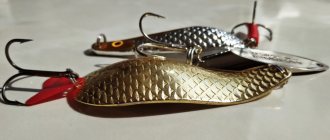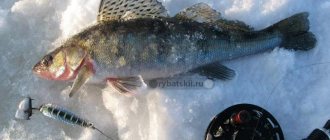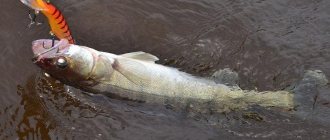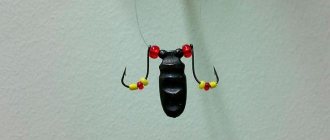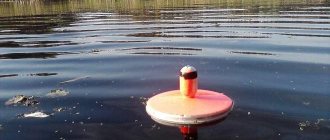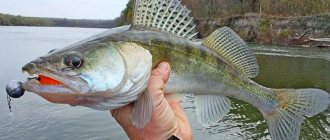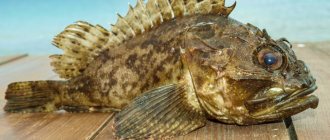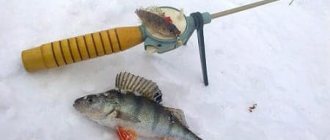In all likelihood, the psychology of a fisherman is structured in such a way that it will never be possible to fully achieve perfection in fishing. Always and under any conditions, there are reasons that provide reasoned food for improving fishing techniques, equipment and bait. The spinner is constantly on the lookout, trying to have a universal, catchy bait, or better yet several copies of it, in his fishing arsenal and constantly help him achieve a significant result when fishing. But even with today’s huge offer of all kinds of baits from manufacturers in the field of fishing accessories, it is not always possible to get such a lifesaver.
In this regard, the ability to independently make a fishing tool that can satisfy the needs of a spinning player plays an important role. In our article we will talk about making a spinner for pike perch, the material of which will be a blank from a tube. In particular, we will talk about the various modifications of the spinner that can be made from the type of metal profile and tools required to complete the work. We will discuss the technology of making homemade products and give recommendations for its use in the practice of pike perch hunting.
Types of tube spinners
A tube spinner for pike perch can be made in several effective versions for both winter and summer fishing with spinning rods and for plumb trolling. The most common type of tubular spinner for pike perch is a modification of the cut spinner. The cut modification itself can be hollow or filled with a filler that creates noise or serves purely for loading purposes. The type of direct bait is used less frequently, but in some conditions, especially high predator activity, such options are preferred due to the increased fishing speed.
Spinner made from different tube diameters
In image 2, the middle segment of a homemade tubular spoon has a smaller tube diameter. But you can do the opposite - cut out the two outer parts of a composite spoon from tubes of a smaller diameter, and make the inner one from a tube of a larger diameter.
The same figure below shows the arrow view of the hinge petal at one of the ends of the tubular cavity. The second petal is located strictly behind the first, so it is invisible, but its configuration is the same.
Both the head part of a homemade tubular spoon and the remaining component segments of the tube can be made heavier by incompletely filling the cavities with lead or solder.
Materials and tools for manufacturing
Making a spinner from a tube with your own hands is quite simple; the main thing is to stock up on the material of the required diameter and composition and have a tool available that allows you to process the metal. Of course, the presence of metalworking skills and the desire to create a fishing masterpiece are welcome. The material for the manufacture of fishing tools is selected from rolled pipes of copper, duralumin, stainless steel and ordinary chrome-plated or nickel-plated steel. As a rule, the diameters of the workpieces are taken in the range of 8–12 mm . For loading, lead or tin is used, which is poured in molten form into the cavity of the workpiece.
You will also need to purchase standard fishing connecting elements in the form of winding rings and, if necessary, swivels, and also have tees available. The tools for cutting workpieces will require a hacksaw or a small electric cutting machine. To drill holes for the winding rings in the product, you must have a screwdriver or a hand drill with drills with diameters of 1.5-2 mm. The saw cuts are processed with a finely cut file, and the product is sanded and polished with sandpaper with different sizes of abrasive stone.
Measurements when cutting blanks and making cuts are made with a ruler with millimeter indicators, and a protractor is used to accurately calculate angles. A metal scriber or a marker will help make markings that are noticeable to the eye. For tinning and sealing the ends of the fishing tool, medium-power electric soldering irons are used.
Important! Cutting, filing, drilling holes and working with filling the inside of the product with fused metal can most easily be done on a workbench, securing the workpiece in a bench vice.
The necessary material, and in particular small-diameter non-ferrous pipes, can be most easily purchased from organizations involved in the installation of air conditioning and refrigeration equipment.
What metal are lure tubes made of?
Typically, aluminum or copper is used to make tubing tackle. A homemade aluminum spoon will ultimately weigh 7 grams, and a copper tube spoon will weigh 14. But you can also use other materials: aluminum, copper, brass, steel and alloys.
A stainless steel spoon will be a good bait, since it will not corrode in the water and thereby cover the pattern.
Dimensions of homemade tube baits
Do-it-yourself winter lures for pike perch are made in smaller sizes compared to summer lures. This is caused by the different intensity of predator activity in the warm and cold seasons. If you fish in open water with baits in sizes 60–100 mm and a diameter of 10–12 mm, then options for under-ice lures are used in sizes from 40 to 60 mm and a thickness of no more than 8 mm. When assembling a fishing tool from composite links, you can vary the size by joining different diameters and turning the sections in opposite directions of the bait relative to its central axis. All these nuances, as well as the cutting angles, allow the product to be given its own unique play pattern, thereby giving the spinner individuality and originality.
Important! Both summer and winter pike perch spoons can be made in a noise version with your own hands. To do this, it is necessary to add a couple of bearing balls into the sealed cavity of the tubular blank, which freely fit into the hole of the bait along the diameter. During animation, the sound of balls hitting each other and the walls of the pipe will additionally attract the predator to the fishing point.
DIY spinner tube for pike perch
We will tell you and show you how you can make a very catchy tube lure for pike perch in literally 15 minutes. This lure can be used both for spinning fishing in the summer and for vertical trolling in the winter. That is, the spinner tube is absolutely universal.
A do-it-yourself spinner tube for pike perch is made from an ordinary tube; you can take absolutely any tube, of any diameter, from any material: stainless steel, copper, brass, etc. You can leave the color as it is, but you can also paint it. It all depends on your imagination. In our example, this is a regular chrome-plated steel tube.
Making a spinner is very simple. Take a tube and cut it at some angle on both sides. The angle is chosen absolutely arbitrarily, you can make different angles in front and behind, that is, again, everything depends on your imagination and then directly check on the pond how they play with different cuts.
So, we got it - this is the preparation.
We made cuts parallel to each other, as an option: you can say one cut in one direction, the second in the other direction, you can generally make one straight cut, and the second at an angle. Depending on which cut, the bait will play differently, then eat, use your imagination, experiment and you will always have a catch.
Now we need to drill two holes: one for the tee, the second for the swivel to tie the spoon to the main fishing line.
Now, just in case, we will need to process the sharp edges with a needle file and sandpaper and we will equip it.
The equipment is simple - we need:
- tee of suitable size;
- a pair of winding rings;
- swivel
First we put on the tee, then on the other side, another winding ring and a swivel.
You can use some kind of clasp instead of winding rings to quickly change baits, here you decide for yourself what is more convenient for you.
But the swivel must be installed, because this bait plays quite actively. Well, in general, the spinner tube is ready and it took us no more than 15 minutes.
The bait turned out to be very catchy and practically free. This spoon can be used both for spinning and winter fishing rods and believe me, you will not be left without a catch.
The process of making a tubular spoon
Homemade pike perch bait is made according to the following algorithm:
- selection of an analogue or template for the production of a nozzle;
- determination and selection of material for manufacturing;
- the process of performing the work itself;
- testing the bait and adjusting its game.
First, the fisherman needs to decide what type of product will be prepared. The easiest way is to take a factory product of a similar type or a ready-made handmade item as a sample. Next, a cutting device is used to cut a piece of tube to the required size, taking into account the allowances for processing the edges. The cut is made at an angle, which is pre-determined as the optimal parameter that allows the bait to carry out the necessary wiring.
Important! With an acute angle, the stroke of the product is not sweeping and even; an obtuse angle increases the stroke corridor, making the movements smooth and wide.
Holes are drilled at the edges of the cuts to allow winding rings to be inserted into the workpiece - one for attaching to the cord, the other for inserting a tee. After these manipulations, the blank is cleaned of burrs and ground or polished to the desired brightness and color. After polishing, a load is formed if it is provided for in the part manufacturing plan. After loading, the workpiece is equipped with winding rings and a tee and testing begins with debugging the game. They test ready-made spinners on ponds or at home in a filled bathtub. Operating parameters are achieved by balancing the load, equipping the tees with additional accessories in the form of flies, silicones and nylon threads.
Rotating spoons and their types
Rotating spoons are considered more catchy than oscillating spoons. The rotating sheet creates a kind of acoustics during the wiring process. In addition, the moving part gives the impression of a fish moving. There are claims that guiding a spinner does not require any skills. Unfortunately, it is not. Each spoon requires its own approach, and the spinner is no exception. Every fisherman has a rotating spoon in his arsenal. It can work when the predator ignores any other bait.
Petal spinner
Much depends on the shape and size of the petal. The larger the petal and the more rounded its body, the less frequency it will rotate. If the petal is narrow and smaller, the more active the bait is.
Recommendations for the use of various models:
- When fishing at significant depths, as well as in the presence of a current, it is advisable to give preference to a bait with a narrow blade.
- When fishing in still water, as well as in small areas of the water area, you can opt for a bait that has a luxurious petal.
Unfortunately, using spinners has a number of disadvantages. Firstly, the petal gets stuck quite often. In this case, the wiring turns out to be “idle”. Secondly, most lures are light in weight, which makes long casts problematic. Thirdly, the bait generally flies poorly, due to its design. In this regard, it should be noted that it is very difficult to make a high-quality rotating spoon yourself. A quality spinner is said to begin its rotation with a half turn
This means that the petal will rotate at the minimum speed, and this is very important
There are models that have a fly attached to the tee as an additional element that attracts a predator. As a rule, this is a fixed tuft of wool of a bright, mostly red, color.
Spoons with turbines
The main advantage of such a spinner is that for a high-quality game you do not need any special skills from the fisherman. Although it is primitive at first glance, it is very effective for fishing. Very often such elements are recommended for beginners. After all, everyone wants to catch a good catch, even those who came to fish for the first time.
Petal spinner
The petal is the most attractive part of the bait, since the speed and nature of vibration of the entire equipment will depend on its design and shape. Moreover, the predator will examine and evaluate such tackle from a very impressive distance. Rotation of the petal at a large angle will cause the strongest vibration, while with a decrease in this parameter, the activity of the bait will decline.
The shape of the petal of the tackle is also of great importance. There is an unwritten rule: the narrower the part, the stronger the speed of its rotation. Accordingly, the game is more active.
Tips from fishermen regarding the use of individual models:
- if you plan to fish at great depths or in a body of water with a strong current, it is best to give preference to a model with thin narrow petals;
- whereas in shallow water and in standing water, specimens with wide, spreading leaves are perfect.
There are also models that additionally have a front sight on the tee. The latter can serve as another irritant for the predator, and can influence the stabilization of the equipment during the wiring process. For the most part, it is a fly or a small tuft of red fur.
Read: Do-it-yourself pike fishing
Spoons with turbines
First of all, it is worth noting that this bait is perfect for ultralight. It can be purchased at any specialized store, or you can make it yourself.
1. First, we will start making the petal. To do this, we need metal, for example, from a car telescopic antenna or another sheet no more than one millimeter thick. 1.1 Draw a small template on cardboard and cut it out. It is from this blank that we will make a sketch on a metal sheet.1.2 After we have the blank, all edges are carefully processed with a needle file.1.
3 We make holes at both ends of the homemade product and remove any burrs that appear. 1.4 We bend the petal of the sides with the holes towards the site. The petal is ready!2. Glue a tee to a stainless steel wire with a diameter of no more than 1.5 mm.3. Then we wind the bead and the petal itself.4. We make a slight bend in the subsequent loop to fix the monofilament at the required distance from the top of the petal. Moreover, in this case it is necessary to eliminate the obstacle to the rotation of the load of the tackle itself.5.
Composite spoon
The components are formed from parts that are similar in shape, but different in diameter and have mirrored parts. The composition circuit can be composed of five to seven links connected by winding rings, which allows each element to move independently in relation to each other. It is worth noting that each link of a composite spinner can be loaded differently, thereby introducing an imbalance into the wiring of the entire set and causing the predator to become interested in movements that are atypical for a healthy fish.
Recommendations and tips for use
The bait, made according to the description presented above, is used in several types of predator fishing and works especially effectively when performing vertical trolling from a boat or from ice, as well as during jerky spinning retrieves at the bottom of the reservoir. When performing vertical trolling, the bait is initially placed on the bottom, subsequently raising it to different horizons in the water column and making short throws of 15–20 cm, with pauses of 2–4 seconds. Starting the next period of wiring, they hit the bottom with a homemade product a couple of times and repeat the cycle with tossing again.
The fishing tool is attached to the cords without leashes, directly, tying it through a swivel to the equipment. On braided cords, the animation comes out much brighter than on monofilament lines due to their high stretchability. Copper spoons are fished in sunny weather; colors with silvery tints are used on cloudy days and at night. Spinning runs are carried out in channel pits on solid bottom foundations. In such places, large pike perch often wait for prey. We lead the bait like a silicone fish equipped with a jig head, making a two or three-level step, allowing the bait to fall to the bottom after jerking. Touching the bottom makes a sound, which additionally attracts fish to the fishing area. When attacking, the pike perch presses the bait to the bottom, which causes a sharp blow to the spinner’s hand. The blow is a signal to hook.
To a greater extent, pike perch is caught by the beard, which requires caution when fishing, since the tee is located on the outside of the trophy and, when the cord is sharply and quickly reeled in, it easily jumps out of the fish’s body. To prevent loss of catch, it is imperative to use a landing net to lift the fish, excluding an offensive coastal landing or loss of the trophy under the boat itself.
How to make a lure for pike
To make spinners, it is best to have a clear example in the form of an original product or a sketch, on the basis of which it is much easier to carry out production. Having determined the subject of the final work, the fisherman needs to purchase the material required for processing, which often includes steel, copper and aluminum sheets up to 3 mm thick, tubes made of steel, copper, brass and duralumin not exceeding a diameter of 15 mm, steel wire up to 3 mm thick mm, lead and tin. In addition to the material for the blanks, standard fishing accessories are purchased: single and double hooks, tees, winding rings and swivels.
To process materials and connect together the elements of a future product, you will need a metalworking tool: a hacksaw, a hammer, a file, pliers, a drill with a set of drills, a vice, a scriber and a tape measure for marking and controlling the dimensions of the workpiece. An electric tool, such as a screwdriver and a small cutting machine, otherwise known as an angle grinder, will help speed up the process of producing catchy lures for pike. Paints and metal markers, holographic stickers, beads, beads and hard synthetic threads in bright colors will help give the bait a fighting look and coloring.
Making pike jigs
A homemade pike spoon is most often made from the scoop of an ordinary tablespoon. This part of the tableware is ideal for bait after a couple of simple manipulations associated with preparing the holes for subsequent equipping the workpiece with a tee and a winding ring for the fastening element. Initially, the handle is cut off from the spoon using a cutting machine or a hacksaw, cleaning the cut area to lines that coincide with the smooth lines of the future spoon. Holes are drilled at the tops of the oval in such a way that the winding rings with the tee and swivel threaded through them rotate freely without being pinched.
A swivel is placed in the wide part of the workpiece. A tee is installed at the narrow end. Without any additional modification, even this type of spinner will have certain qualities of play when retrieved, but for greater attractiveness, the body of the homemade product can be painted in colors that are promising, in the opinion of the fisherman. The part of the spoon that remains in the form of a handle can be processed into an analogue of a sheer Devon-type spoon.
In addition to using a spoon, the vibrator can be made from a piece of flat metal, steel sheet, copper or aluminum sheet by extruding or hammering the shape and then finishing the edges. To load this type of homemade product by soldering or peening, the concavity of the workpiece is filled with the required weights of tin and lead alloy, as well as a copper or brass plate. The stroke width of the finished fishing tool is adjusted by bending the edges. The deeper the concavity, the wider and wider the stroke of the oscillator.
Read Fluorocarbon fishing line and its use in fishing
Homemade turntables
Before you start making lures for pike in the form of a spinner, you need to carefully understand the principle of operation of the bait, the basis of which is the movement of the petal around a fixed axis through the influence of water pressure during wiring. The main working body of the bait is the petal, which is cut out of tin in the form of an oval. An oval can be of different sizes in width and length. A hole is drilled at one of the tops of the workpiece, through which the petal will be strung on a metal rod, which is a steel wire with a diameter of 1 to 3 mm. Loops are formed at the ends of the wire for subsequent installation of winding rings. The hinges are made by simply twisting the material using pliers. A swivel with a carabiner or a clasp is attached to one of the loops, and a tee is placed in the second.
To load the spinner around the rod, copper wire is wound in tight rings, gaining the required mass for the bait core, varying the number and diameters of the wire turn. The petal itself is painted in attractive colors or holographed. Some craftsmen, instead of a petal, equip the turntable with a turbine in the form of a miniature propeller with two or four blades. The turbine is cut out of a sheet of tin, bending the blades at different angles, which is how the individual performance characteristics of the homemade product are achieved. Assembling such a bait is similar to assembling a tool with a petal.
